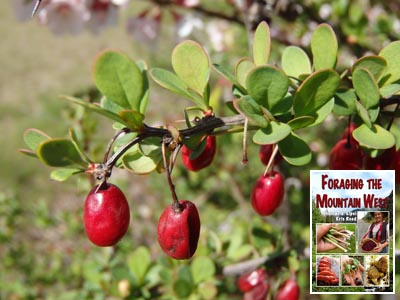| Thomas J. Elpel's Web World Portal  Wildflowers & Weeds |  


 Wildflowers-and-Weeds.com
Wildflowers-and-Weeds.com Plant Identification, Foraging, and Ecology with Thomas J. Elpel Home | Plant Identification | Plant Families Gallery | Edible Plants | Mushrooms | Links Desertification & Weed Ecology | Weed Profiles | Search this Site |
|
Berberidaceae If you find an dicot plant with evergreen, holly-like leaves and flower parts in multiples of three then it is likely a member of the Barberry family. The small yellow flowers are clustered together in racemes and mature into purplish, sour berries. Members of this family may have 2 or 3 small bracts masquerading as sepals on the back of a flower, but otherwise there are typically 6 true sepals and 6 petals, often appearing in series of 3 each. The ovary is positioned superior and consists of 2 to 3 united carpels (syncarpous) forming a single chamber. It matures as a sour berry. The inner bark is a brilliant yellow, due to the presence of an intensely bitter berberine alkaloid. Key Words: Evergreen dicot plants with floral parts in threes and bright yellow inner bark. Please e-mail Thomas J. Elpel to report mistakes or to inquire about purchasing high resolution photos of these plants.
There are more
Return to the Plant Families Index |
|
Looking for life-changing resources? Check out these books by Thomas J. Elpel:
|
|
|

















